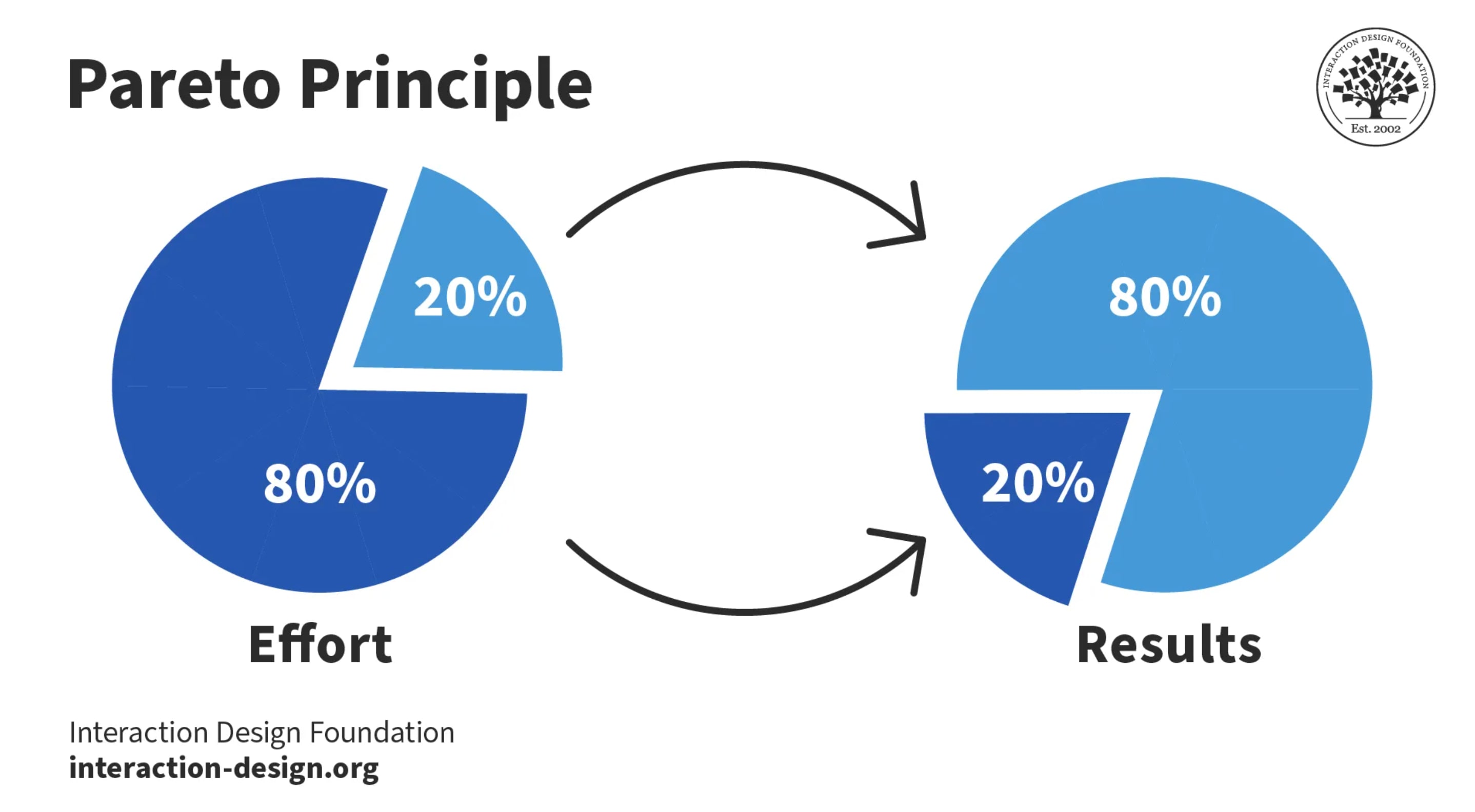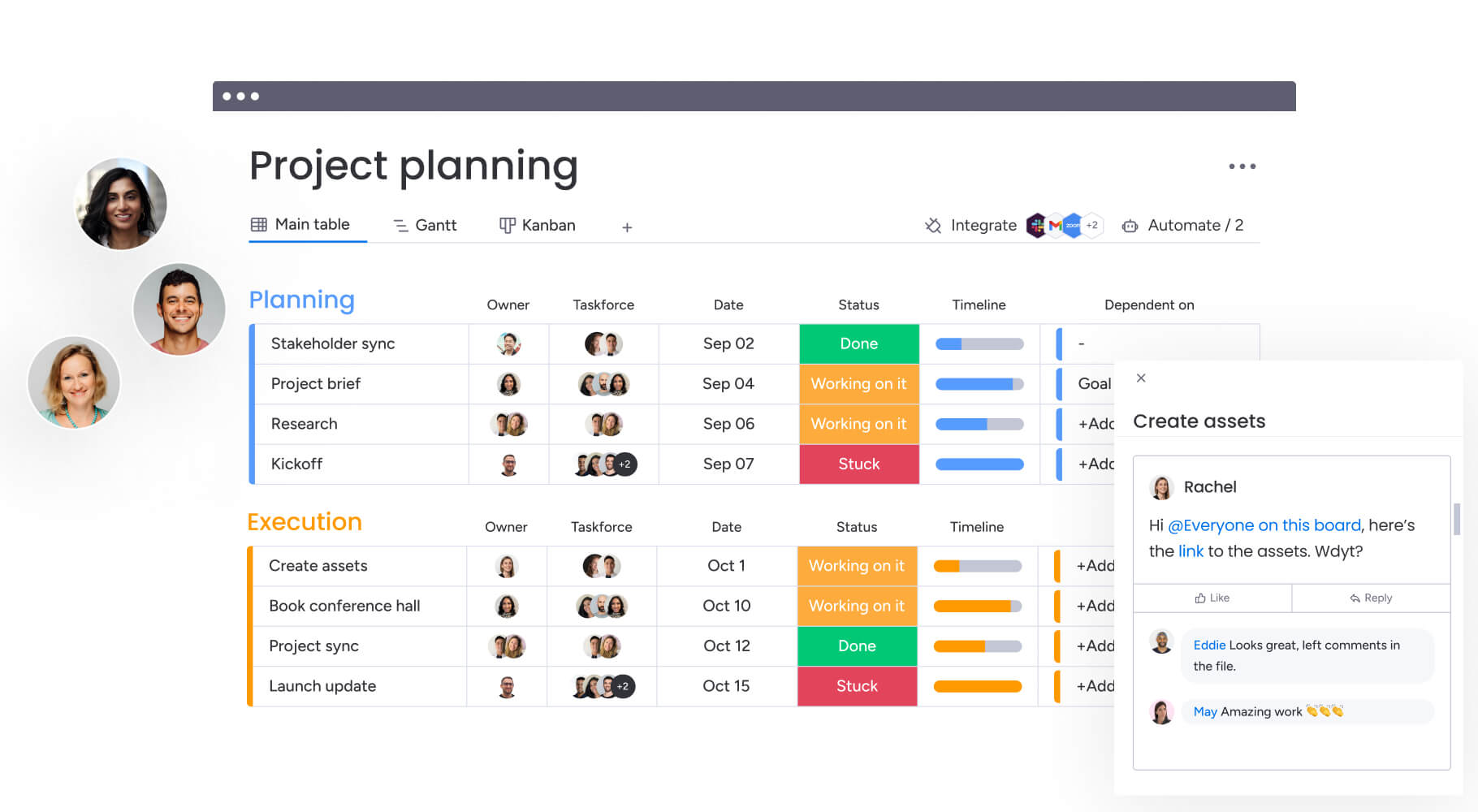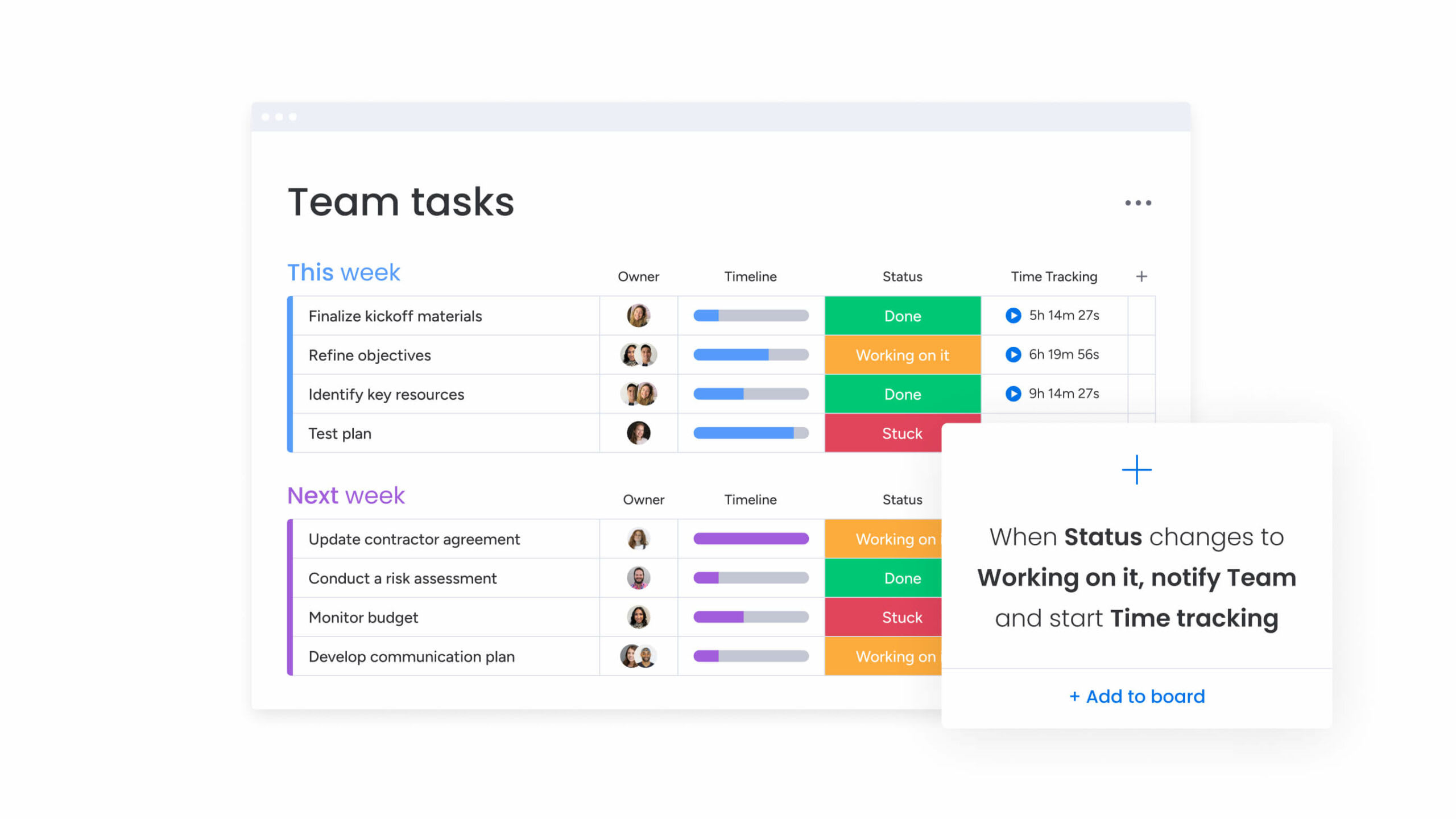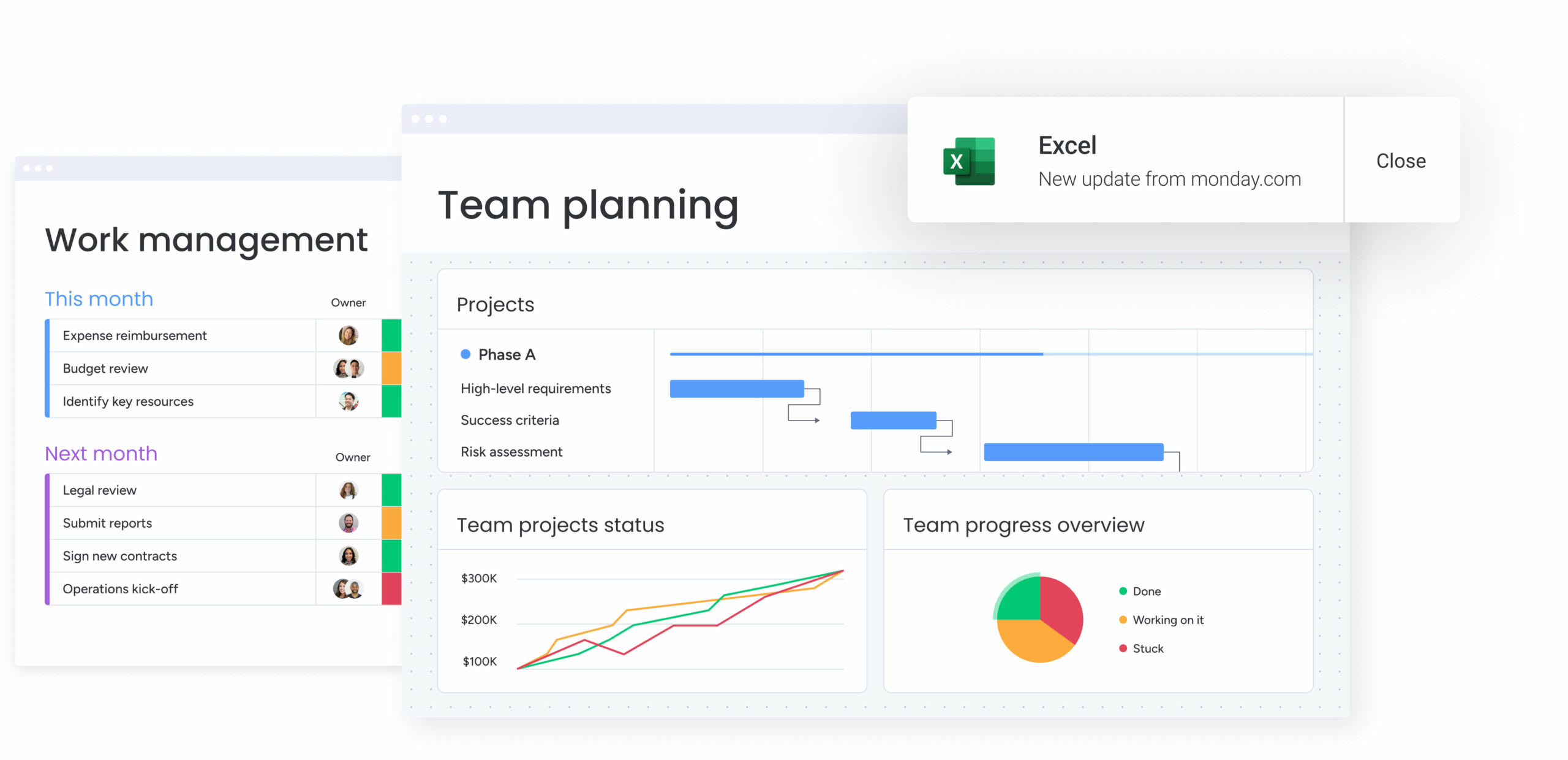Prioritization is key in project management. It can be tempting to start with the quicker, easier tasks to get them done first, but that’s not always going to be the most efficient path.
When managing projects with tons of tasks, prioritization is essential as it will help you keep your project on time and budget while making sure employees don’t get burned out by exerting effort on tasks that don’t have a significant impact.
The Pareto principle, also known as the principle of factor sparsity, is a prioritization technique that can help your team tackle the highest-impact tasks first to improve project productivity. In this blog post, we’ll take a closer look at how it works, some examples, benefits and drawbacks, and how a platform like monday work management can make it easier to implement.
Get startedWhat is the Pareto principle?
The Pareto principle, also referred to as the 80/20 rule, is a concept that states that 80% of consequences come from 20% of causes.
This principle assumes that there’s an unequal distribution between consequences and causes. When we use it for business situations, the Pareto principle helps us set project priorities to focus on tasks that have the largest impact.
Where does the Pareto principle come from?
Italian economist, Vilfredo Pareto, developed this principle after he studied Italy’s distribution of wealth and observed that 80% of the country’s land was owned by 20% of the population. The method was later dubbed the Pareto principle by Joseph M. Juran in the 1940s. Put into a business perspective, Pareto’s principle means that 80% of your results come from 20% of your revenue. When planning and prioritizing work according to this principle, it makes the most sense to spend more time and effort on the high-priority tasks that will create the biggest impact.
How do you use the 80/20 rule?
While the 80/20 rule can be applied to almost anything, like sports, investments, agriculture, and time management, it has a wide range of applications and is often used in business since it helps teams and workers understand where to focus their energy. It conceptualizes an unequal relationship between inputs and outputs.

In Agile project management, work is broken down into smaller tasks and sprints. Still, knowing where to begin when handling dozens or even hundreds of tasks can be daunting. According to the Prateo principle, teams can better identify the most influential tasks and start on those. Here’s how it can be used:
Decision making
When it comes to making decisions, the Pareto principle can help decision-makers focus on the actions with the most positive impact. This can help teams assign resources where it matters most, whether it’s budget in a marketing campaign or manpower for software development, reducing decision fatigue and ensuring businesses spend excessive time on less critical areas.
Quality control
The 80/20 rule can help identify just 20% of the factors that are leading to 80% of the problems. This helps organizations streamline quality control efforts by creating a more targeted approach to efficiently allocate resources to eliminate major sources of defect and improve overall quality.
Productivity
The Pareto principle helps teams identify 20% of efforts that lead to the bulk of meaningful outcomes. By focusing on high-impact work, employees are less bogged down by unimportant tasks and this level of prioritization can improve time management while enhancing overall performance.
Examples of the Pareto principle in project management
The 80/20 rule is frequently used in project management to help teams prioritize tasks and work more efficiently. After creating a project plan in a platform like monday work management, project managers can turn their attention toward the areas that drive the most value, helping their teams reach results that are on time and within budget.
Get startedHere are a few examples of how the Pareto principle can be used to optimize project management:
- Task prioritization: By identifying the 20% of tasks that will account for 80% of a project’s success, project managers can get these high-impact tasks out of the way sooner, paving the way for teams to achieve major milestones faster and avoid delays.
- Issue resolution: Often, it’s just a small number of recurring issues that cause the most delays on a project. By addressing the top 20% of these problems sooner, teams can reduce bottlenecks and keep projects on track.
- Resource management: In projects, sometimes 20% of resources or manpower contribute the most to a project’s success. By supporting key contributors, teams can significantly improve project efficiency.
What are the benefits of using the Pareto principle?
One of the biggest advantages of the 80/20 rule is that it allows teams to derive the most impact from the least amount of effort. Aside from that, there are other key advantages to applying this principle to your project management:
- Helps guide team’s prioritize and task management
- Improves productivity
- Better resource organization and allocations
- Stronger decision-making
- Encourages focus and concentration on high-priority items
- Assists in setting realistic and impactful goals
- Helps teams reach goals sooner
Disadvantages of using the 80/20 rule
While there are many advantages to the Pareto principle, there are also some drawbacks. Most of the drawbacks relate to the understanding, execution, and expectations surrounding this rule. Let’s take a closer look:
- There’s a misconception that teams only need to put in 20% effort to achieve 80% of the results, but that’s not realistic. The percentages aren’t indicative of effort, but causes and effects, so the level of effort still needs to be 100% to achieve results.
- Team members can get too fixated on 20% of the tasks and lose sight of the big picture or on other tasks. All the tasks need to get done, and balancing the 20% of high-priority tasks with the rest of them can be challenging, but it’s still important.
- According to the Pareto principle, 20% of your customer base may create 80% of your revenue, but offering a higher level of customer service to only 20% of your clients may not be the best strategy for retaining customers at all levels.
- Sometimes, our understanding of the 80/20 rule is too rigid. The percentages refer to an example that a small amount of the cause can lead to most of the results, but that’s not to say that it can’t also be 10% and 90%, or 40% and 60%.
The Pareto principle isn’t the only technique for project prioritization. Some teams may find it more helpful to use other options like the MosCow prioritization method, the Eisenhower Matrix, or a Getting Things Done (GTD) template.
How to implement the Pareto principle with monday work management
If you want to implement the 80/20 rule in your workplace, you first need to make sure your workforce understands how to prioritize their tasks. Turning to a platform like monday work management makes it a lot easier to visualize and prioritize tasks so that you can put the Pareto principle into action.
With monday work management, teams can use boards to sort and organize tasks. Then, each employee, based on their responsibilities and the project’s overall goals, can focus on the highest priority items. Many features and key tools can help teams implement and maintain the Pareto principle, here’s a look at some of them.
Customizable boards

With monday work management, you can choose from hundreds of templates that can be customized to your needs. Build a Pareto chart with your project tasks, set responsibilities, priority levels, due dates, and more. Add relevant documents, feedback and input, and links to each task to make sure all the information is available in one place.
Task automations

Set automations and workflows for otherwise manual tasks so the right team members can get receive notifications at certain intervals, when a status changes, or when deadlines arrive. With automations, teams can focus on the tasks and let monday work management take care of manual, repetitive work.
Advanced reports and analytics

Get a bird’s eye view of your work with project overview dashboards, reporting tools, and insights into your team’s progress. With monday work management’s reporting and analytics tools, you can better understand if the 80/20 split is accurate and if the Pareto principle implementation has the desired effect.
Get startedBoosting productivity with the Pareto principle
Even once teams get used to using the Pareto principle, it’s important to remember that it’s not a hard and fast rule. The numbers 80% and 20% aren’t an exact science, but rather what’s important to retain is the idea that not all tasks are equal, so prioritization is key. To prioritize properly, implementing one of the most powerful platforms on the market like monday work management can help teams organize projects and tasks while collaborating efficiently.
FAQs
What is the Pareto principle when it comes to time management?
The Pareto principle helps teams and individuals focus on 20% of their tasks to generate 80% of the desired outcomes. This approach helps reduce the amount of wasted time and resources on low-impact activities and ensures efforts are focused on high-value tasks. For time management, this technique minimizes distractions and helps teams streamline priorities so that projects can be finished faster.
How is the Pareto principle used in Six Sigma?
In Six Sigma, the Pareto principle is used to identify a few key factors that cause the majority of inefficiencies. Six Sigma teams can use this technique to target improvement efforts more effectively and achieve more substantial, measurable results.
How to practice the Pareto principle?
To put the Pareto principle into practice, start by identifying 20% of the tasks, problems, or causes that lead to 80% of the results or issues. Then, continue by prioritizing these tasks in your daily work plan. Regularly assess progress and make adjustments as you go to make sure you’re consistently focused on the highest-impact items.
Does the Pareto principle always work?
While useful in many different scenarios, the Pareto principle isn’t always perfect. In some cases, the distribution of causes and effects doesn’t fit the 80/20 model exactly. Not only that but relying solely on the Pareto principle may lead to overlooking important details that still require attention. It’s helpful to use guidelines, but not a strict universal law.
When should you not use the Pareto principle?
The Pareto principle may not be ideal if there’s a situation that requires attention to multiple elements, like when strict compliance or uniformity is needed. In highly regulated industries where every detail is critical, the 80/20 rule may lead to overlooking small yet important causes.
